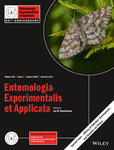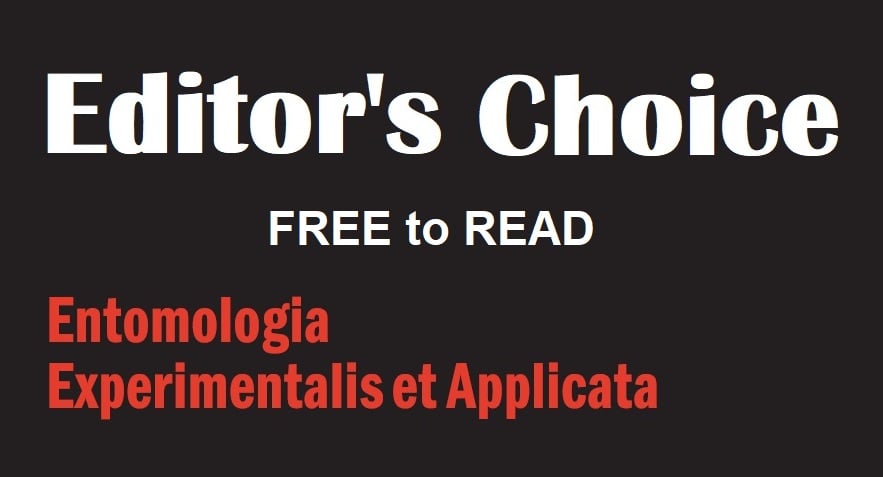Entomologia Experimentalis et Applicata
Journal list menu
Export Citations
Download PDFs
Issue Information
Special Issue – Effects of Nutrition, Development, and Genetics on Fitness
Entomologia Experimentalis et Applicata celebrates its 60th anniversary
- Page: 1
- First Published: 06 February 2018
Size matters in insects – an introduction
- Pages: 2-3
- First Published: 06 February 2018

Body size is a major determinant of fitness in insects. Adult size is affected by egg size, larval nutrition, and developmental conditions, but it also has a genetic basis. This special issue addresses how environmental and genetic factors affect body size in a range of insect species, with a specific focus on how size translates into fitness. Such knowledge is relevant for insect mass rearing programs that aim to maximize individual size.
How to become larger: ontogenetic basis of among-population size differences in a moth
- Pages: 4-16
- First Published: 06 February 2018
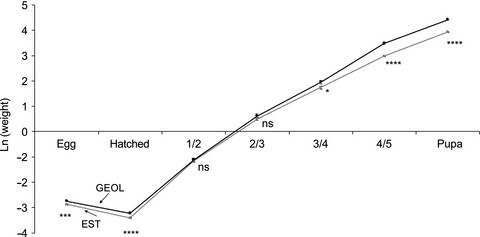
South European representatives of the geometrid moth Ematurga atomaria are twice as large as their north European conspecifics. We demonstrated that the size difference accumulated in the course of larval development by means of longer instar-specific growth periods. Eggs were larger in the southern population as well, though this difference did not carry over to later stages.
Attractive males produce high-quality daughters in the bean bug Riptortus pedestris
- Pages: 17-23
- First Published: 31 January 2018
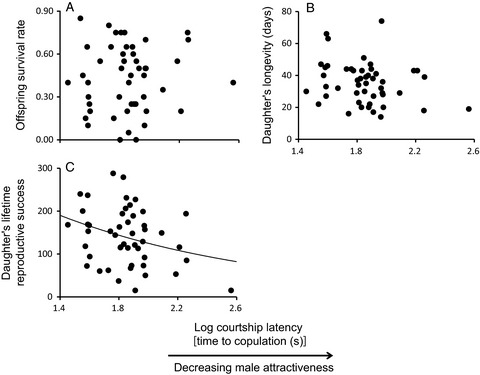
We investigated whether females gain good-genes benefits from mating with attractive males in the bean bug Riptortus pedestris (Hemiptera: Alydidae). Females mated with attractive males could produce daughters with higher lifetime reproductive success. Our results suggest that female mating preference in R. pedestris evolved via Fisherian as well as good-genes benefits.
Maternal rearing condition and age affect progeny fitness in the parasitoid wasp Lysiphlebus fabarum
- Pages: 24-31
- First Published: 31 January 2018
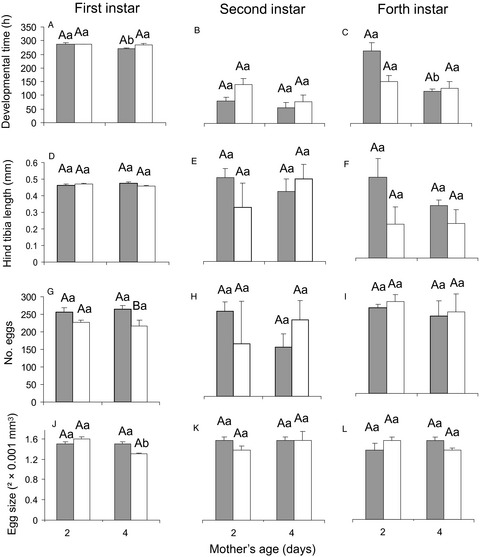
Small and young mothers of Lysiphlebus fabarum (Hymenoptera: Braconidae) produced progeny with a longer developmental time compared to large and old mothers. Age-specific maternal effects were not as strong as the effect of the mother's body size. Progeny – developed in black bean aphid, Aphis fabae (Hemiptera: Aphididae) – that hatched from larger eggs also had a larger body size.
Do facultative symbionts affect fitness of pea aphids in the sexual generation?
- Pages: 32-40
- First Published: 31 January 2018
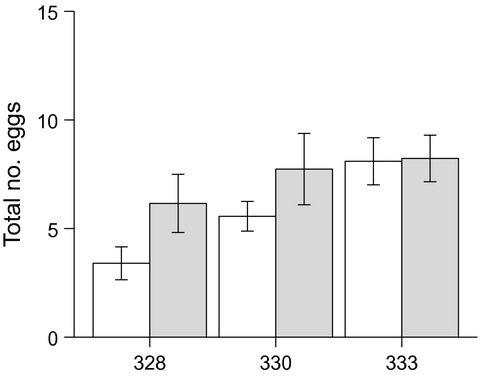
We investigated effects of facultative symbionts on the mating success of pea aphids, Acyrthosiphon pisum (Hemiptera: Aphididae). Females mated to males cured of symbiont Hamiltonella defensa laid fewer eggs on average than females mated to males carrying H. defensa, whereas females were largely unaffected by their facultative symbiont status. Hence, removing a natural symbiont infection may have a negative fitness effect on male aphids.
Larval host plant influences male body size and mating success in a tephritid fruit fly
- Pages: 41-52
- First Published: 31 January 2018
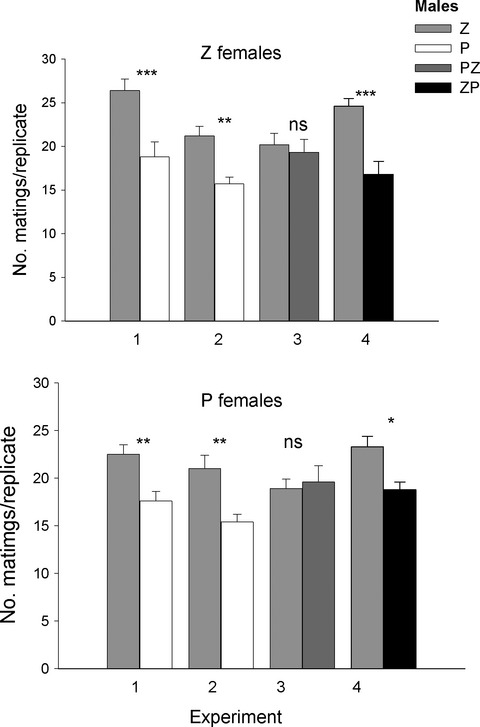
In phytophagous insects, the larval host plant may have a profound effect on the biology of the adult stage. This influence has been most widely studied in females, where larval diet may affect their fecundity and survival. Males have been less well studied. In field tent trials and no-choice laboratory cage trials, the larval host – zucchini vs. papaya – of melon fly, Zeugodacus cucurbitae (Diptera: Tephritidae), was found to affect adult size, which in turn influenced male mating success.
Effects of crowding and host plant quality on morph determination in the soybean aphid, Aphis glycines
- Pages: 53-62
- First Published: 31 January 2018
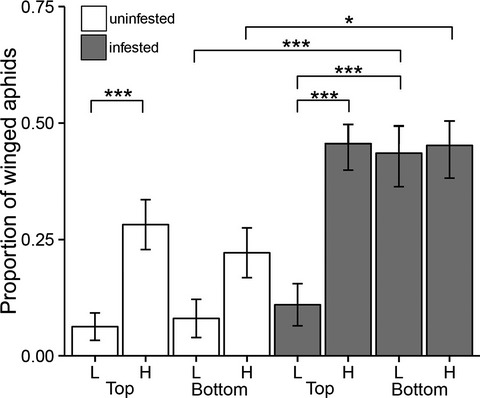
Both pre- and post-natal crowding induced the production of asexual alate (winged) individuals by the soybean aphid, Aphis glycines (Hemiptera: Aphididae). In the field, overall Glycine max plant quality (infested vs. uninfested soybean plants), within-plant differences in nutritional quality (bottom vs. top nodes), and high vs. low levels of crowding interacted to increase the proportion of winged A. glycines nymphs. This response to multiple cues enables flexible production of alates, allowing the aphids to adapt to changing environmental conditions.
A multi-ingredient athletic supplement disproportionately enhances hind leg musculature, jumping performance, and spontaneous locomotion in crickets (Acheta domesticus)
- Pages: 63-73
- First Published: 24 January 2018
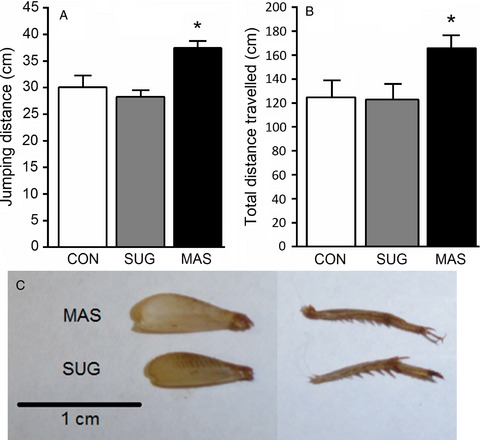
We developed a multi-ingredient athletic supplement (MAS) to improve athletic performance, consisting of 13 commonly used nutraceutical supplements. We examined lifetime impacts of the MAS in the house cricket, Acheta domesticus (Orthoptera: Gryllidae) on measures of athletic performance and life history. The MAS enhanced jumping distance and spontaneous locomotor activity, enlarged hind legs, and improved mean survivorship in untrained crickets. The MAS may represent a novel ‘exercise mimetic’ that benefits athletic performance and survivorship.
Within-diet variation in rates of macronutrient consumption and reproduction does not accompany changes in lifespan in Drosophila melanogaster
- Pages: 74-80
- First Published: 31 January 2018

We used nutritional geometry to test possible relations between lifespan, rate of reproduction, and feeding in the model fruit fly Drosophila melanogaster (Diptera: Drosophilidae). We found no strong correlation between these traits. This means that among flies within a cohort that fed the same diet, higher reproduction or feeding rate is not associated with shorter lifespan.




